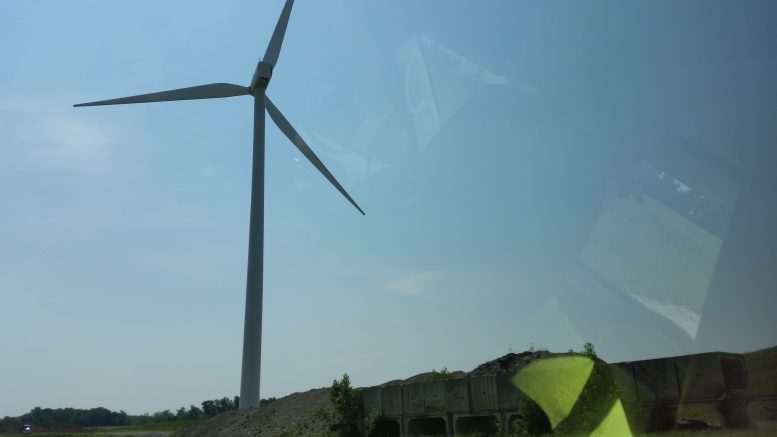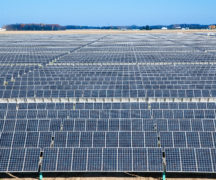By JAN LARSON McLAUGHLIN
BG Independent News
Bowling Green leaders are creating a climate action plan for the city.
“Just like we master plan in other areas, we should be planning long-term here,” council member Rachel Phipps said. “We have much to be proud of, but we need to keep that momentum going.”
City Council committed to the development of a climate action plan for Bowling Green more than a year ago, at its Feb. 2020 strategic planning meeting.
On Monday evening, the Sustainability Committee of Bowling Green City Council met to discuss a draft resolution calling for the development of a Sustainability & Climate Action Plan.
“We can never know just what the future holds, but the trends in this area are clear,” Phipps said. “The state and federal government will increasingly regulate greenhouse gas emissions and prioritize sustainability projects. It is the responsible, forward-thinking thing to do for our citizens and taxpayers to look at this issue comprehensively now.”
The first step in creating a Sustainability & Climate Action Plan is measuring the city’s greenhouse gas emissions. Primary greenhouse gases include carbon dioxide, methane, and nitrous oxide. Understanding the city’s current greenhouse gas emissions will allow the community to set goals and measure progress.
Monday evening, city council’s sustainability committee got some tips on reducing carbon footprints from BGSU’s Sustainability Manager Nick Hennessey.
Hennessey reported that BGSU’s climate action plan was a primarily student-driven effect that began more than a decade ago. The university has worked on reducing greenhouse gases and waste creation, on promoting shuttle services, and pledged to hit carbon neutrality by 2040. The plan includes efforts to conserve energy, alter behaviors, change to LED lighting, and monitor items such as paper purchases and air travel.
“Most of our projects save money as well as reduce the carbon footprint,” Hennessey told city officials.
The university’s carbon footprint is measured annually, and is seeing a drop every year.
Council member Jeff Dennis noted that creation of the BGSU climate action plan was driven by students.
“This is something a lot of young people in particular are paying attention to,” Dennis said.
Dennis talked about the sustainability efforts that are already working for the city.
“Forty percent of energy from renewable sources is something to be proud of,” he said, also noting the high park acreage in the city and the expansion of recycling services at a time when many other communities are having to decrease those programs.
“This is a strong foundation for us to build on,” Dennis said.
Mayor Mike Aspacher wrote a report about Bowling Green’s sustainability efforts, “justifying Bowling Green’s reputation as a sustainability community,” he said, adding, “there’s still work to do.”
His report referenced key findings of a sustainability study that demonstrate proactive operations and policies:
• 40% of BG energy is from renewable energy sources, greatly exceeding the state average of 3% and national average of 20%.
• Bowling Green is home to the first commercial wind farm in Ohio and, currently, the largest solar field in the state of Ohio.
• To help reduce electric consumption and increase efficiency, the city has provided the Efficiency Smart program to its residents and businesses for over 10 years, resulting in an annual CO2 savings of nearly 70,000,000 pounds.
• Residents are provided the EcoSmart Choice program allowing customers the option to pay a little more for their electrical usage to support renewable energy – up to 100%.
• Bowling Green has 400 acres of park land covering 10 sites – a park within roughly 1.5 miles from every home.
• The City of Bowling Green supports robust recycling/organics recycling programs including the recent expansion of the curbside recycling program and the addition of the Pilot Food Waste Drop Off.
• The City of Bowling Green Municipal Utilities department has built and maintains state of the art water and wastewater treatment facilities that meet or exceed federal water quality requirements, as well as EPA wastewater standards, and continue to make improvements to increase water quality, reliability, and sustainability.
• BG has invested in sustainable building practices with new city facilities such as the planned City Building and recently completed City Park Veterans Building, as well as renovation projects to city owned buildings.
A few goals outlined in the report that the mayor is asking staff to begin immediately are:
• Working with the Downtown Bowling Green SID and business owners to develop a pilot recycling program for downtown businesses.
• Completing a litter study and evaluating the need for additional trash receptacles in public areas.
• Continuing to be leaders in the climate action movement by completing an emissions inventory using the ClearPath tool (membership application is awaiting approval from ICLEI: Local Governments for Sustainability). This analysis will allow us to set a baseline inventory of greenhouse gas (GHG) emissions, forecast emissions, explore actions and plan using over 60 calculators modeling GHG reductions from specific actions, and monitor progress by tracking each action and the energy saving/emissions reductions achieved. Utilizing the ClearPath modules will position the city to finish a draft Climate Action Plan by June 2023. This work will include staff support, citizen engagement, and outside consultant work (if necessary).
• Involving and engaging the community in educational outreach programs and incentives. Prior to COVID, staff had developed an educational series revolving around sustainability. Once conditions allow, this series will begin.
• Continuing to promote the incredible sustainability efforts already underway in Bowling Green. Applications have been submitted and are under review for the Ohio EPA’s Encouraging Environmental Excellence for Communities (E3C) award (at the highest level) and the American Public Power Association’s Smart Energy Provider Designation (renewal).
• Continuing to add electric and hybrid vehicles to the city’s fleet.
• Reviewing the impacts and possibility of adding additional electrical vehicle charging stations in public areas as well as the possibility of adding electric charging stations in private parking lots.
“As I have said numerous times, sustainability and improving our efforts in that important area is among my priorities,” Aspacher stated in his report. “Our approach needs to be measured, realistic, and something our community can collectively rally behind. I look forward to working cooperatively with council on this important topic as we move forward.”





